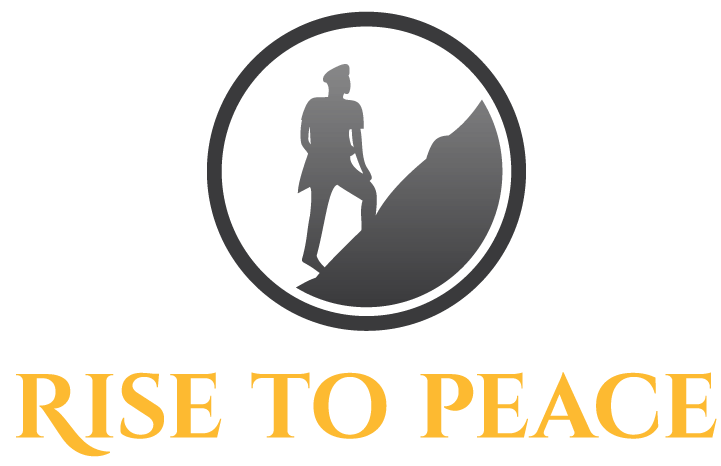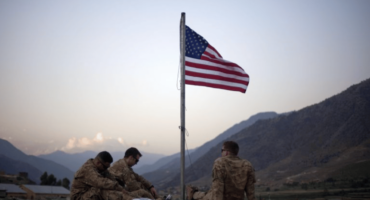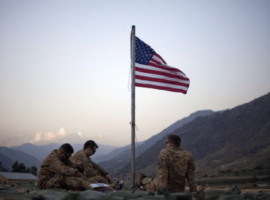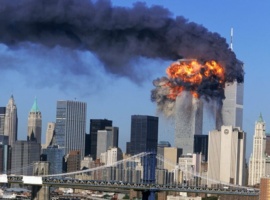Three columns
Digital Extremism
The world has been evolving each day, and by that, society is quickly adapting and changing its means of communication. Not so long ago, people would send letters to get in contact with friends and family that lived in other cities or states but now, talking to loved ones is […]
Read More ›Climate Change Fueled Eco-Terrorism: The Nexus Explained
“We are sinking”: A Speech from the Sea Tuvalu’s foreign minister Simon Kofe addressed the 26th United Nations Climate Change Conference (COP26) knee-deep in the sea to remind the world about climate emergencies and make world leaders realize the plight of residents of sinking island states. Although rising sea levels […]
Read More ›Remembering 9/11 in the Wake of Growing Threats
As the 21st commemoration of the September 11th terrorist attacks approaches, the solemn anniversary brings a new wave of urgency. It has been one year since the Taliban regained control of Afghanistan. Throughout the past year, the Taliban have worked to reinforce oppression by stripping women of their rights and […]
Read More ›List Layout
- October 29, 2022Digital extremism / Rise to Peace blog
- October 24, 2022Environmentalism / Rise to Peace blog / United Nations
- September 11, 2022Rise to Peace blog
- September 3, 2022Rise to Peace blog / United States
Four Columns
Digital Extremism
The world has been evolving each day, and by that, society is quickly adapting and changing its means of communication. Not so long ago, people would send letters to get in contact with friends and family that lived in other cities or states but now, talking to loved ones is […]
Read More ›Climate Change Fueled Eco-Terrorism: The Nexus Explained
“We are sinking”: A Speech from the Sea Tuvalu’s foreign minister Simon Kofe addressed the 26th United Nations Climate Change Conference (COP26) knee-deep in the sea to remind the world about climate emergencies and make world leaders realize the plight of residents of sinking island states. Although rising sea levels […]
Read More ›Remembering 9/11 in the Wake of Growing Threats
As the 21st commemoration of the September 11th terrorist attacks approaches, the solemn anniversary brings a new wave of urgency. It has been one year since the Taliban regained control of Afghanistan. Throughout the past year, the Taliban have worked to reinforce oppression by stripping women of their rights and […]
Read More ›Remembering September 11th: The Prevailing Memories of 9/11
Remembering September 11th “The Black Swan Theory”, coined by Nassim Nicholas Caleb, describes sporadic, unforeseen, and highly significant events. These events are challenging to predict in the normal course of business and are unthinkable. The September 11th attacks portray the Black Swan theory. The tragic event was unexpected to the […]
Read More ›List layout
- October 29, 2022Digital extremism / Rise to Peace blog
- October 24, 2022Environmentalism / Rise to Peace blog / United Nations
- September 11, 2022Rise to Peace blog
- September 3, 2022Rise to Peace blog / United States
Two columns
Digital Extremism
The world has been evolving each day, and by that, society is quickly adapting and changing its means of communication. Not so long ago, people would send letters to get in contact with friends and family that lived in other cities or states but now, talking to loved ones is […]
Read More ›Climate Change Fueled Eco-Terrorism: The Nexus Explained
“We are sinking”: A Speech from the Sea Tuvalu’s foreign minister Simon Kofe addressed the 26th United Nations Climate Change Conference (COP26) knee-deep in the sea to remind the world about climate emergencies and make world leaders realize the plight of residents of sinking island states. Although rising sea levels […]
Read More ›








